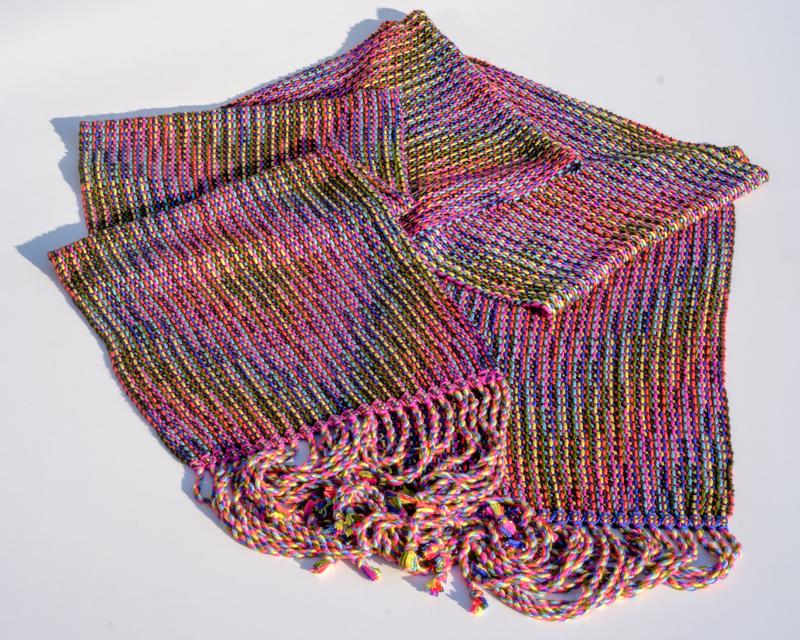The Corris train keeps moving steadily. I tried a symmetric version of Corris and applied the Corris effect to a monochrome warp. Next stop: a warp with six instead of three colors. I wondered what the Corris effect would bring if I turned the color volume up, so I took a dive in my rainbow colored bamboo yarn stash to try out multicolored Corris.

Chasing rainbows
One of my favorite knitting yarns for weaving is a soft and shiny bamboo viscose. I have used this yarn for rainbow projects before – I made a blanket and a shawl using broad colored stripes in the warp. For my Corris rainbow shawl, I used the yarn in a different way. The warp of a Corris project essentially consists of three parallel warps, each with its distinct color. So, instead of making broad unicolored stripes, I alternated six colors thread-by-thread throughout the warp – two colors for each of the three parallel warps.
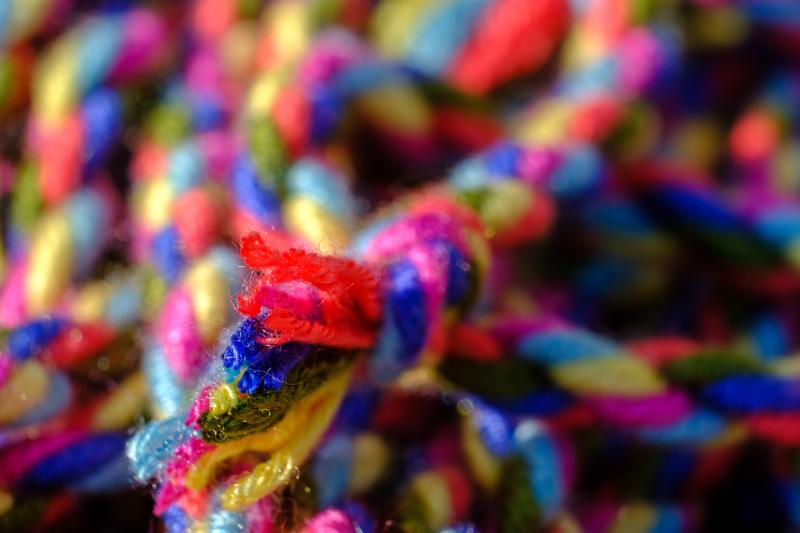
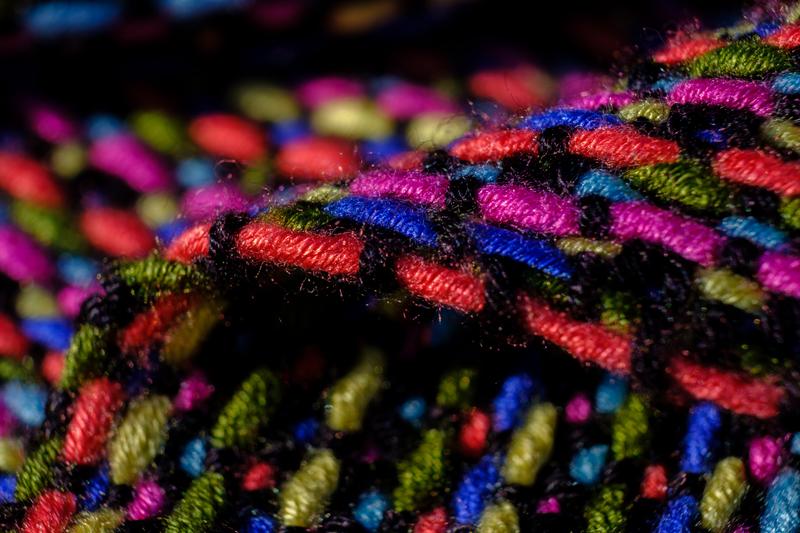
I wanted to give the yarn center stage in the shawl, which is why I kept the pattern simple. I settled on a diamond shape. The threading and treadling sequence are derived from the same design line. The threading sequence of the full warp is three times as long as the design line, due to the addition of two parallel warps. For the treadling sequence, I first made the design line twice as long and then added a tabby. This results in a treadling sequence four times as long as the original design line yielding a weftwise elongated diamond shape.

Playing with color
I knew the six colors I wanted to use: pink, red, yellow, green, turquoise and blue. Yet, I was not sure about the order of these colors in the warp. My first try was to simply follow a harmonious color order: from pink to blue. This actually gave me a nice result, but I decided to delve a little deeper.
I thought about a sensible color order given the fact that the warp consists of three parallel warps. In three-colored Corris, three unicolored parallel warps are interleaved. The combination of the three colors in the woven cloth gives an interplay of colors. In six-colors Corris, this is basically the same, except that now the three warps are two-colored instead of unicolored.
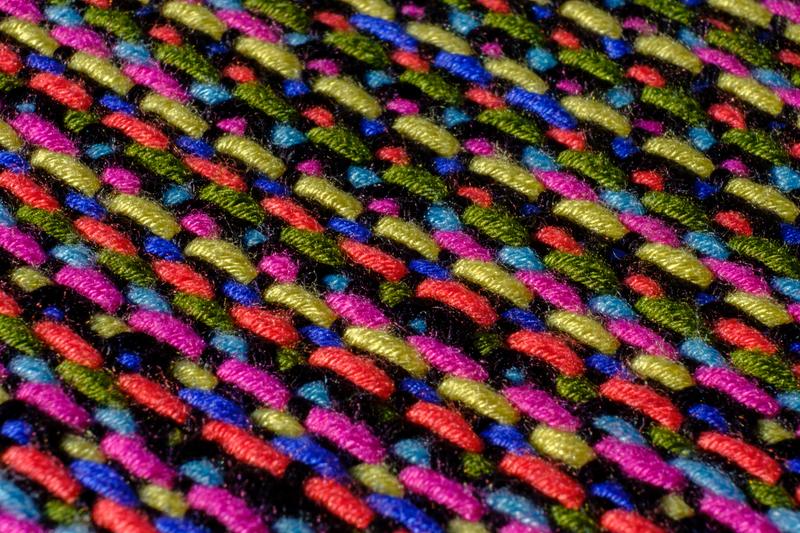

When I first tried the harmonious color order pink – red – yellow – green – turquoise – blue in the warp, I thus interleaved three warps: a pink – green warp, a red – turquoise warp, and a yellow – blue warp. The color order in the interleaved warp is harmonious, but the colors combined in the three individual warps are almost opposites on the color wheel.
This reasoning gave me an idea of another color order that seemed to make more sense. I divided the six colors into three harmonious groups: pink and red, yellow and green, and turquoise and blue. I used these three color combinations for the three parallel warps and then interleaved the warps. This gives a final color order of pink – yellow – turquoise – red – green – blue. This color order might not be harmonious, but the resulting pattern shows a very nice gradual interplay of colors.

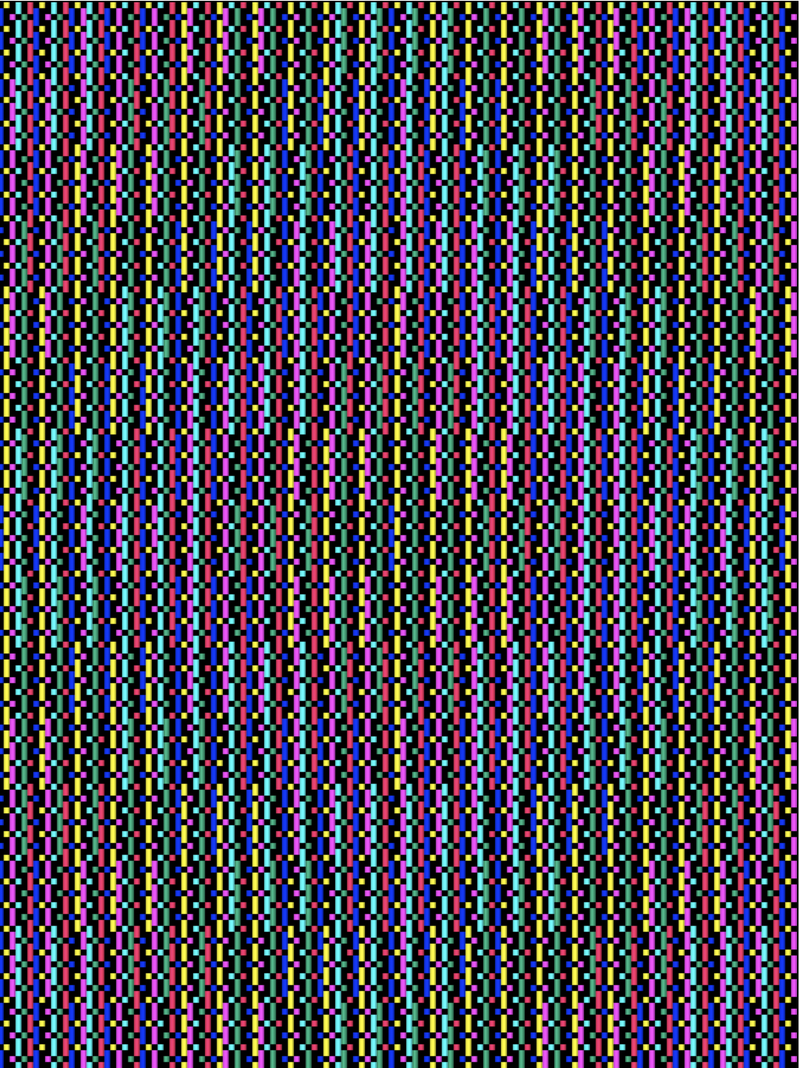
I noticed that, even though the two colors of an individual parallel warp are not adjacent in the final warp, the two colors still interact nicely in the woven cloth. I had to give it another thought why this was the case, but then it became clear to me: the shafts of two subsequent threads of one of the parallel warps are in fact adjacent. This can be seen using a simple design line that starts with shafts 1, 2 and 3. Once the other two parallel lines are added, this results in a sequence for the first 8 warp threads as below.

We see that for these warp threads, pink and red are on shafts 1, 2 and 3, yellow and green on shafts 4, 5 and 6, and turquoise and blue on 7 and 8: ordering the shafts by number we retrieve the harmonious color sequence.
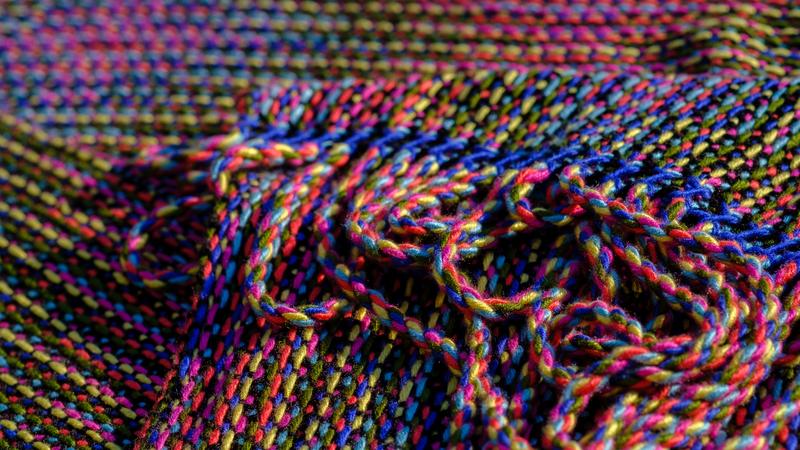
We can take this one step further by extending the design line to a full diagonal from shaft 1 to 8. The complete threading sequence with parallel warps will be 24 warp threads long in this case. For warp threads 9-16, we find that pink and red are on shafts 4, 5 and 6, yellow and green on shafts 7 and 8, and turquoise and blue on 1, 2 and 3: the harmonious color sequence remains, but is shifted relative to warp threads 1-8. For warp threads 17-24 there is another shift in the harmonious color sequence: pink and red are on shafts 7 and 8, yellow and green on shafts 1, 2 and 3, and turquoise and blue on 4, 5 and 6.

To the loom
I really enjoy these little analyses of weave structures and colors, and it’s even better to put the results of my analyses to the test. So, off to the loom I went. I used a black weft, as I feel a neutral dark yarn is one of the best backgrounds to display the color interactions in the warp.
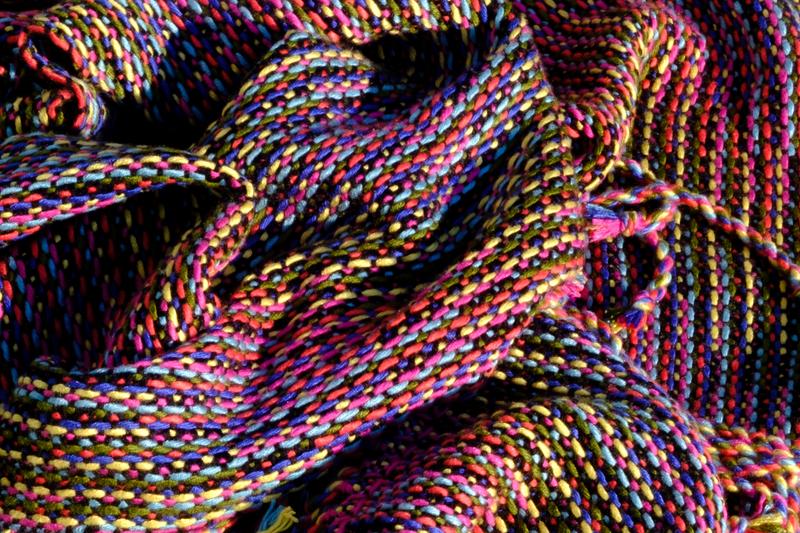
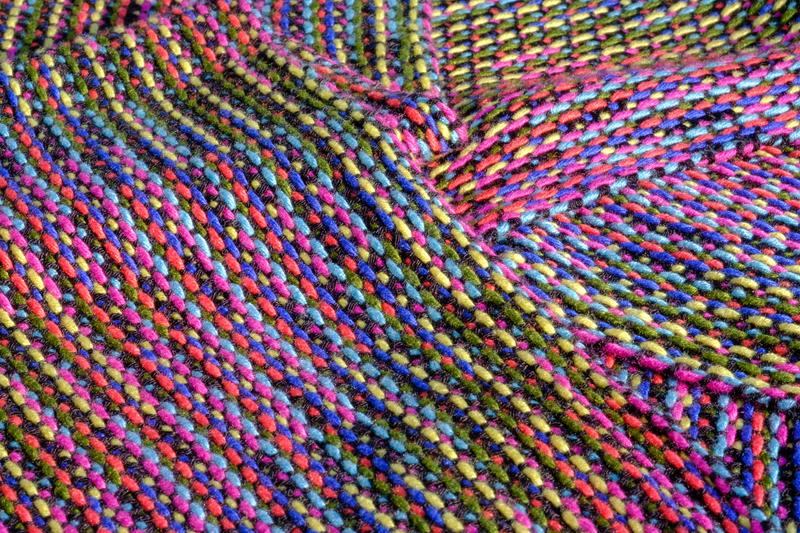
I am pleased with how the shawl turned out. The rainbow colors make the shawl bright and cheerful. Due to the shimmer of the yarn, the colors combine beautifully together. I also really like the weave structure. The warp floats in the cloth are very consistent — they all have a length of three weft picks. To me, these consistent floats make the warp threads seem almost like strings of colorful beads.
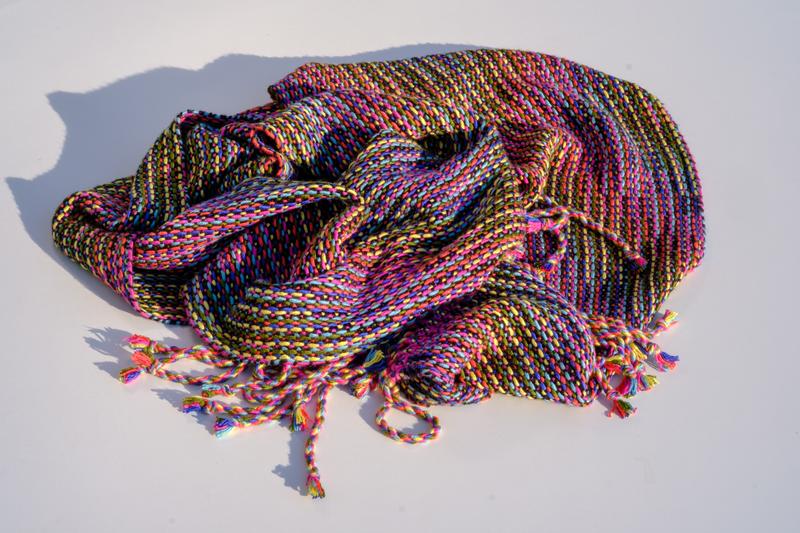
This shawl was a fun and quick weave. I already have some other ideas I would like to try with the Corris effect, so I will keep the Corris train moving.
